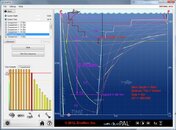gcarter
Contributor
Steve-
Interesting read. I LOL's when I saw this, as I read your book over Christmas *, but hadn't yet bothered with the last chapter - I don't ever expect to do any deco diving. I actually read it just last night. Timing, as they say, is everything.
* Highly recommend. Even as a new diver, not a tech diver, I got a lot out of it. My son is reading it now, and when he is done I will be giving it a re-read before getting back in the water this spring. Godd job!
Interesting read. I LOL's when I saw this, as I read your book over Christmas *, but hadn't yet bothered with the last chapter - I don't ever expect to do any deco diving. I actually read it just last night. Timing, as they say, is everything.
* Highly recommend. Even as a new diver, not a tech diver, I got a lot out of it. My son is reading it now, and when he is done I will be giving it a re-read before getting back in the water this spring. Godd job!




